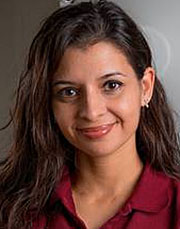Ilke Arslan | |
|---|---|
 Arslan in 2013 | |
| Born | |
| Alma mater | University of California, Davis University of Illinois Chicago |
| Scientific career | |
| Institutions | Pacific Northwest National Laboratory University of California, Davis University of Cambridge Argonne National Laboratory Sandia National Laboratories |
| Thesis | Atomic scale characterization of threading dislocations in GaN (2004) |
Ilke Arslan is a Turkish American microscopist who is Director of the Center for Nanoscale Materials and the Nanoscience and Technology division at Argonne National Laboratory. She was awarded the Presidential Early Career Award for Scientists and Engineers in 2009 and appointed to the Oppenheimer Science and Energy Leadership Program in 2019.